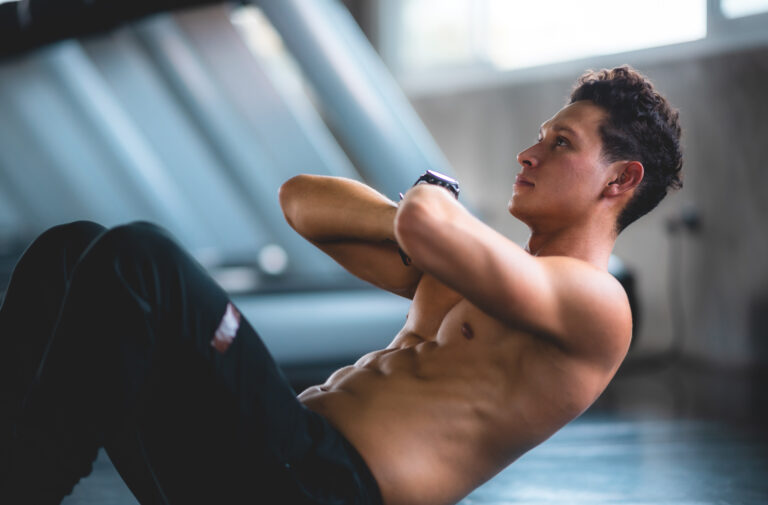What is the Pectoralis Minor?
The pectoralis minor is a small yet crucial muscle located in the upper chest, beneath the larger pectoralis major. Despite its size, this muscle plays a vital role in various movements and functions of the shoulder and scapula, making it an essential component in overall upper body mechanics and fitness.
Anatomical Description
The pectoralis minor originates from the third, fourth, and fifth ribs near their costal cartilages. It then extends diagonally upwards to insert into the medial border and superior surface of the coracoid process of the scapula. This triangular-shaped muscle lies deep to the pectoralis major and is considerably smaller in size.
Understanding the anatomical relationship of the pectoralis minor to other structures is crucial for appreciating its function. It sits underneath the pectoralis major, providing a layered effect in the chest’s musculature. The pectoralis minor’s proximity to the ribs and scapula means it plays a significant role in stabilizing and moving the shoulder blade. Its fibers are oriented in a way that they can pull the scapula forward and downward, which is essential for various arm and shoulder movements.
Anatomical variations in the pectoralis minor are not uncommon. In some individuals, the muscle may have additional slips or attachments, which can affect its function and the mechanics of the shoulder. These variations can sometimes be identified through imaging studies or during surgical procedures and can influence both the susceptibility to injury and the approach to training and rehabilitation.
Physiological Role
The primary function of the pectoralis minor is to stabilize the scapula by drawing it anteriorly and inferiorly against the thoracic wall. This action is critical during movements that involve pushing or lifting, as it helps maintain shoulder stability and proper alignment.
In terms of respiratory mechanics, the pectoralis minor assists in deep inhalation. When the muscle contracts, it lifts the ribs it is attached to, thereby increasing the volume of the thoracic cavity. This action is particularly important during strenuous physical activities where the demand for oxygen is elevated.
Furthermore, the pectoralis minor plays a role in the overall posture of the upper body. Tightness or weakness in this muscle can lead to an imbalance, contributing to poor posture and associated issues such as shoulder pain or dysfunction. Understanding its physiological role helps in devising effective training and rehabilitation programs to address these issues.
Biomechanics
The biomechanics of the pectoralis minor involve its role in movements and stabilization of the shoulder girdle. During actions like pushing, the muscle helps stabilize the scapula against the thoracic wall, ensuring that the force generated by the pectoralis major and other muscles is efficiently transmitted to the arm and hand.
When lifting weights, especially during exercises like bench presses or push-ups, the pectoralis minor contributes to the downward rotation and depression of the scapula. This action is crucial for maintaining proper form and preventing injuries. The muscle’s leverage allows it to exert significant force on the scapula despite its relatively small size.
Posture also plays a significant role in the biomechanics of the pectoralis minor. Poor posture, such as rounded shoulders, can lead to overactivity and tightness in the pectoralis minor, which can further exacerbate postural issues and lead to a cycle of discomfort and dysfunction. Proper training and stretching of the pectoralis minor are essential to maintaining a healthy posture and preventing biomechanical imbalances.
Development and Growth
The development of the pectoralis minor begins early in life and continues to be influenced by various factors throughout adulthood. Genetic factors play a significant role in determining the potential size and strength of this muscle, as they do with all muscles in the body. Hormonal influences, particularly during puberty, can also affect muscle development.
Physical activity is a crucial factor in the growth and development of the pectoralis minor. Regular engagement in activities that involve pushing and lifting can help increase the muscle’s size and strength. Exercises such as push-ups, bench presses, and specific resistance training targeting the scapular stabilizers are particularly effective in developing the pectoralis minor.
However, it is important to approach training with a balanced perspective. Overworking the pectoralis minor without adequate stretching and relaxation can lead to muscle tightness and imbalances. This highlights the importance of a well-rounded training program that includes both strengthening and flexibility exercises to ensure the muscle develops optimally without contributing to postural issues.
Common Injuries and Disorders
Injuries to the pectoralis minor, though less common than those to the pectoralis major, can still significantly impact an individual’s function and comfort. Strains and tears in the pectoralis minor can occur due to acute trauma or chronic overuse. These injuries often present with pain in the chest or shoulder, especially when moving the arm.
Chronic conditions affecting the pectoralis minor include tendinitis and muscle tightness. Tendinitis, an inflammation of the muscle’s tendon, can result from repetitive stress and overuse, often seen in athletes who frequently perform pushing or lifting activities. Muscle tightness in the pectoralis minor can contribute to postural problems, leading to conditions like thoracic outlet syndrome, where the neurovascular structures are compressed between the muscle and surrounding bones.
Treatment for pectoralis minor injuries varies depending on the severity and nature of the condition. Conservative measures such as rest, ice, and physical therapy are often effective for minor strains and tendinitis. More severe cases, such as significant tears or persistent tendinitis, may require surgical intervention. Understanding these potential injuries and their treatments is essential for both prevention and effective management.
Rehabilitation and Prevention
Rehabilitation for pectoralis minor injuries focuses on restoring normal function, strength, and flexibility. Physical therapy plays a central role in this process, with targeted exercises designed to gently stretch and strengthen the muscle without exacerbating the injury. Techniques such as myofascial release and therapeutic massage can help alleviate muscle tightness and improve blood flow to the area, promoting healing.
Preventative measures are equally important in maintaining the health of the pectoralis minor. Incorporating stretching exercises that target the pectoralis minor into a regular fitness routine can help prevent muscle tightness and imbalance. Stretches such as the doorway stretch or using a foam roller can be effective in maintaining flexibility.
Strengthening exercises that focus on the scapular stabilizers are also beneficial. Ensuring that the pectoralis minor and its surrounding muscles are strong and flexible can help prevent injuries and improve overall shoulder stability. Regularly incorporating exercises like scapular push-ups, face pulls, and other scapular stabilization movements can contribute to a balanced and injury-resistant shoulder girdle.
Role in Fitness and Athletic Performance
The pectoralis minor, despite its small size, plays a significant role in various sports and fitness activities. Its ability to stabilize the scapula is crucial in activities that require pushing, such as weightlifting, boxing, and certain martial arts. The muscle’s contribution to shoulder stability and movement efficiency makes it essential for athletes who perform overhead movements or engage in contact sports.
Training the pectoralis minor involves a combination of exercises that promote strength, stability, and flexibility. Compound movements like bench presses and push-ups indirectly target the pectoralis minor while focusing on the pectoralis major and other muscles. Specific exercises, such as scapular push-ups and dynamic stretching routines, directly engage and strengthen the pectoralis minor, enhancing its functional capacity.
Athletes and fitness enthusiasts can benefit from a well-rounded training regimen that includes attention to the pectoralis minor. Proper training can enhance performance, prevent injuries, and contribute to overall upper body strength and stability. Understanding the role of the pectoralis minor in fitness and athletic performance highlights the importance of including targeted exercises in any comprehensive training program.
Key Takeaways
The pectoralis minor is a small but vital muscle that plays a crucial role in shoulder and scapular movements, respiratory mechanics, and overall posture. Understanding its anatomy, function, and the importance of proper training and rehabilitation can help maintain optimal muscle function and prevent injuries.









